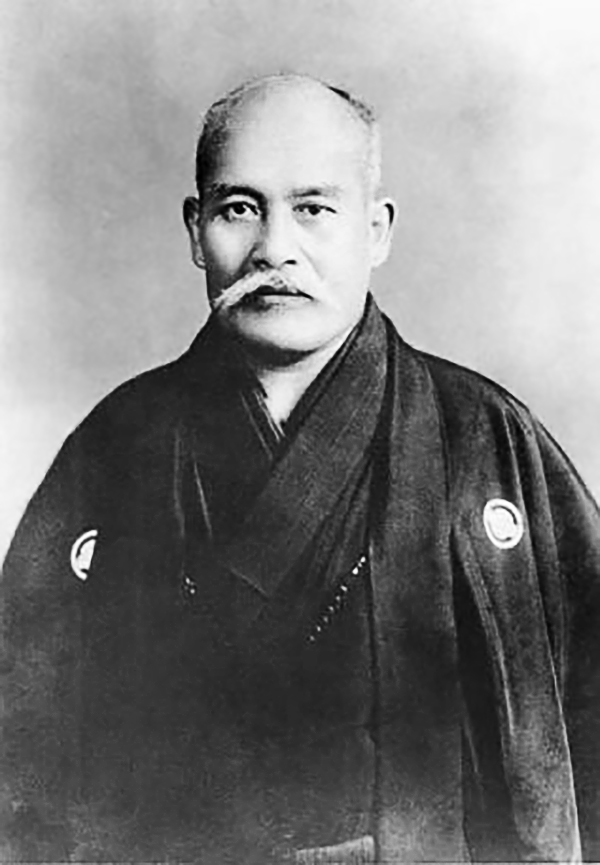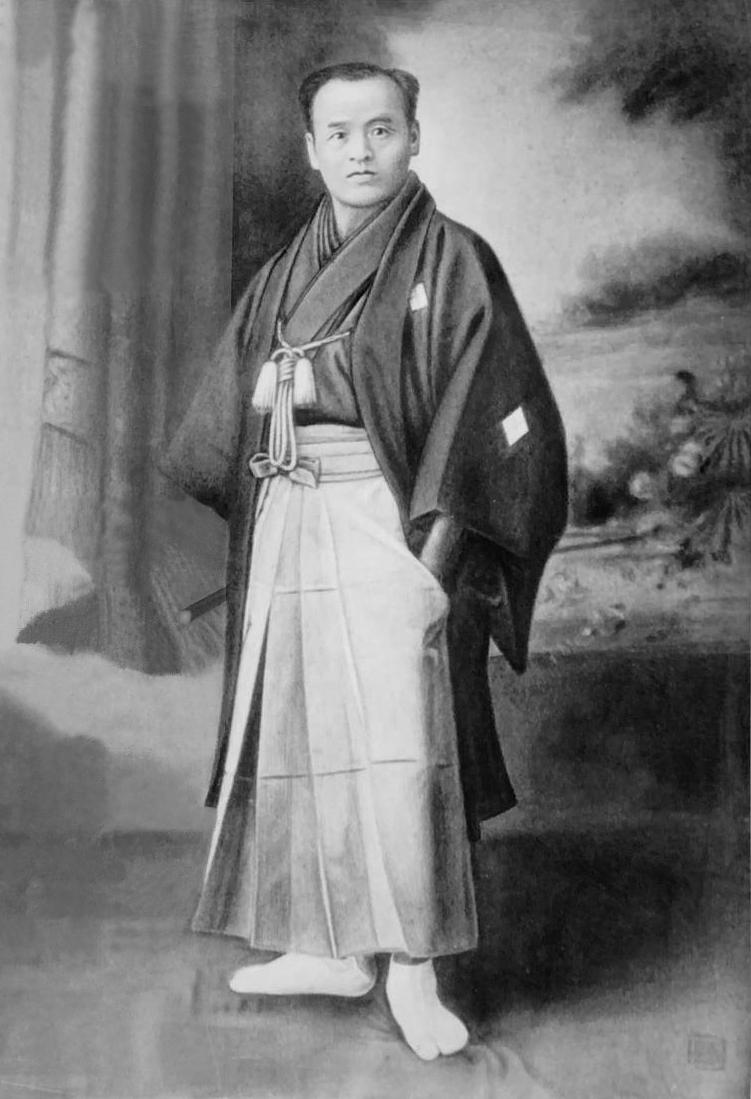|
Nishio Style
Nishio style Aikido, often simply referred to by Aikido practitioners as ''Nishio Aikido'', is a martial art style created by Shoji Nishio, a prolific Aikido practitioner. His style is characterized as dynamic and effective. Atemis and sword principles are deeply embedded in techniques. Philosophy, views Style classification While utilizing different underlying core mechanics, Nishio never considered his Aikido to be a different school of Aikido (like Iwama Ryu, Ki Society, Yoshinkan, Shodokan Aikido, etc.) He wanted his approach to be a branch part of Aikikai umbrella. As such, he decided against calling his Aikido style "Nishio-ryu" (but not the same for Iaido). Engagement with oppositions Nishio believed that one of Aikido's core tenets is about acknowledging the other person. Most Aikido techniques offer 3-4 opportunities to strike down an opponent but ultimately choose the least damaging option. Even when throwing, he said, Aikido practitioners should try ''not'' t ... [...More Info...] [...Related Items...] OR: [Wikipedia] [Google] [Baidu] |
Shoji Nishio
was a Japanese aikido practitioner and innovator. He held the rank of 8th dan shihan from the Aikikai. He also achieved multiple high ranking honors in other martial arts from different lineages, most notably Iaido, Judo, Karate. Nishio developed his Aikido style based on his understanding of Aikido founder Morihei Ueshiba's teaching and experience with other martial arts. His style has been described by practitioners as dynamic, natural and effective. The uniqueness of his style compared to other Aikido styles is the integration of the sword principles and atemi mechanics into Aikido techniques. His contributions to martial art includes the creation of a new school of iaido, the introduction of aikido koshinage, different mechanical interpretations of classical budo concepts, among others. Some emphases of his Aikido style include the importance of acknowledgement of opposition, weapon techniques, atemi, and natural stance. Nishio's role to Aikido extended beyond technical asp ... [...More Info...] [...Related Items...] OR: [Wikipedia] [Google] [Baidu] |
Judo
is an unarmed gendai budō, modern Japanese martial art, combat sport, Olympic sport (since 1964), and the most prominent form of jacket wrestling competed internationally.『日本大百科全書』電子版【柔道】(CD-ROM version of Encyclopedia Nipponica, "Judo"). Judo was created in 1882 by Kanō Jigorō () as an eclectic martial art, distinguishing itself from its predecessors (primarily Tenjin Shin'yō-ryū, Tenjin Shinyo-ryu jujutsu and Kitō-ryū jujutsu) due to an emphasis on "randori" (, lit. 'free sparring') instead of alongside its removal of striking and weapon training elements. Judo rose to prominence for its dominance over Kodokan–Totsuka rivalry, established jujutsu schools in tournaments hosted by the Tokyo Metropolitan Police Department (警視庁武術大会, ''Keishicho Bujutsu Taikai''), resulting in its adoption as the department's primary martial art. A judo practitioner is called a , and the judo uniform is called . The objective of competitive ju ... [...More Info...] [...Related Items...] OR: [Wikipedia] [Google] [Baidu] |
Bokken
A ''bokken'' (, , 'wood', and ''ken'', '(double-edged) sword') or ''bokutō'' (, , 'wood', and ''tō'', '(single-edged) sword') is a Japanese wooden sword used for training in kenjutsu. It is usually the size and shape of a ''katana'', but is sometimes shaped like other swords, such as the ''wakizashi'' and '' tantō''. Some ornamental ''bokken'' are decorated with mother-of-pearl work and elaborate carvings. Sometimes, it is spelled "boken" in English. ''Bokken'' are traditionally composed of red oak or white oak, although any hardwood can be used. In comparison, practice swords made of flexible, soft wood such as bamboo are referred to as ''shinai''. History It is hard to determine precisely when the first ''bokken'' appeared due to secrecy in ancient martial arts training and loose record-keeping. While various mock weapons were surely used during the earlier periods of Japanese history, usage of ''bokken'' in their modern form first emerged during the Muromachi Period (1 ... [...More Info...] [...Related Items...] OR: [Wikipedia] [Google] [Baidu] |
Knifehand Strike
In martial arts, a knifehand strike is a strike using the part of the hand opposite the thumb (from the little finger to the wrist), familiar to many people as a karate chop (in Japanese, ''shutō-uchi''). Suitable targets for the knifehand strike include the carotid sinus at the base of the neck (which can cause unconsciousness), mastoid muscles of the neck, the jugular, the throat, the collar bones, ribs, sides of the head, temple, jaw, the third vertebra (key stone of the spinal column), the upper arm, the wrist (knifehand block), the elbow (outside knifehand block), and the knee cap (leg throw). In many Japanese, Korean, and Chinese styles, the knifehand is used to block as well as to strike. Japanese martial arts is a term from Japanese martial arts like aikido and Chinese- Okinawan martial arts like karate and Shorinji Kempo referring to a hand position that resembles that of the blade of a sword. This can be in a high, middle or low position but is usually extended ... [...More Info...] [...Related Items...] OR: [Wikipedia] [Google] [Baidu] |
Aikido Techniques
Aikido techniques are frequently referred to as ''waza'' 技 (which is Japanese for technique, art or skill). Aikido training is based primarily on two partners practicing pre-arranged forms (''kata'') rather than freestyle practice. The basic pattern is for the receiver of the technique ('' uke'') to initiate an attack against the person who applies the technique—the 取り '' tori'', or ''shite'' , (depending on aikido style) also referred to as ''nage'' (when applying a throwing technique), who neutralises this attack with an aikido technique. Both halves of the technique, that of ''uke'' and that of ''tori'', are considered essential to aikido training. Both are studying aikido principles of blending and adaptation. ''Tori'' learns to blend with and control attacking energy, while ''uke'' learns to become calm and flexible in the disadvantageous, off-balance positions in which ''tori'' places him. This "receiving" of the technique is called ''ukemi''. ''Uke'' continuously se ... [...More Info...] [...Related Items...] OR: [Wikipedia] [Google] [Baidu] |
Nishio Style
Nishio style Aikido, often simply referred to by Aikido practitioners as ''Nishio Aikido'', is a martial art style created by Shoji Nishio, a prolific Aikido practitioner. His style is characterized as dynamic and effective. Atemis and sword principles are deeply embedded in techniques. Philosophy, views Style classification While utilizing different underlying core mechanics, Nishio never considered his Aikido to be a different school of Aikido (like Iwama Ryu, Ki Society, Yoshinkan, Shodokan Aikido, etc.) He wanted his approach to be a branch part of Aikikai umbrella. As such, he decided against calling his Aikido style "Nishio-ryu" (but not the same for Iaido). Engagement with oppositions Nishio believed that one of Aikido's core tenets is about acknowledging the other person. Most Aikido techniques offer 3-4 opportunities to strike down an opponent but ultimately choose the least damaging option. Even when throwing, he said, Aikido practitioners should try ''not'' t ... [...More Info...] [...Related Items...] OR: [Wikipedia] [Google] [Baidu] |
Kamae
is a Japanese term used in martial arts and traditional theater. It translates approximately to "posture". The Kanji of this word means "base". The implied meaning is 'readiness' or 'be ready'. Kamae is to be differentiated from the word , used in Japanese martial arts to mean stance. While ''tachi'' (pronounced ''dachi'' when used in a compound) refers to the position of the body from the waist down, kamae refers to the posture of the entire body, as well as encompassing one's mental posture (i.e., one's attitude). These connected mental and physical aspects of readiness may be referred to individually as and , respectively. Although it is a generic term, context may mean there's a default specific posture which is being implicitly referred to. e.g. many modern styles use ''kamae'' by itself as shorthand usually for the style's basic stance for sparring or self-defense. As a further note, there are also related verbs, and adding ''te'' to the end of kamae makes the command ... [...More Info...] [...Related Items...] OR: [Wikipedia] [Google] [Baidu] |
Aikido Stages3
Aikido ( , , , ) is a modern Japanese martial art which is split into many different styles including Iwama Ryu, Iwama Shin Shin Aiki Shuren Kai, Shodokan Aikido, Yoshinkan, Renshinkai, Aikikai, and Ki Aikido. Aikido is now practiced in around 140 countries. It was originally developed by Morihei Ueshiba, as a synthesis of his martial studies, philosophy and religious beliefs. Ueshiba's goal was to create an art which practitioners could use to defend themselves against attacks, while also protecting the attackers from injury. Aikido is often translated as "the way of unifying (with) life energy" or as "the way of harmonious spirit". According to the founder's philosophy, the primary goal in the practice of aikido is to overcome oneself instead of cultivating violence or aggressiveness. Morihei Ueshiba used the phrase to refer to this principle. Aikido's fundamental principles include: (entering), , (breathing control), (triangular principle), and (turning) movements w ... [...More Info...] [...Related Items...] OR: [Wikipedia] [Google] [Baidu] |
Judo
is an unarmed gendai budō, modern Japanese martial art, combat sport, Olympic sport (since 1964), and the most prominent form of jacket wrestling competed internationally.『日本大百科全書』電子版【柔道】(CD-ROM version of Encyclopedia Nipponica, "Judo"). Judo was created in 1882 by Kanō Jigorō () as an eclectic martial art, distinguishing itself from its predecessors (primarily Tenjin Shin'yō-ryū, Tenjin Shinyo-ryu jujutsu and Kitō-ryū jujutsu) due to an emphasis on "randori" (, lit. 'free sparring') instead of alongside its removal of striking and weapon training elements. Judo rose to prominence for its dominance over Kodokan–Totsuka rivalry, established jujutsu schools in tournaments hosted by the Tokyo Metropolitan Police Department (警視庁武術大会, ''Keishicho Bujutsu Taikai''), resulting in its adoption as the department's primary martial art. A judo practitioner is called a , and the judo uniform is called . The objective of competitive ju ... [...More Info...] [...Related Items...] OR: [Wikipedia] [Google] [Baidu] |
Aikido
Aikido ( , , , ) is a gendai budō, modern Japanese martial art which is split into many different styles including Iwama Ryu, Iwama Shin Shin Aiki Shuren Kai, Shodokan Aikido, Yoshinkan, Renshinkai, Aikikai, and Ki Aikido. Aikido is now practiced in around 140 countries. It was originally developed by Morihei Ueshiba, as a synthesis of his martial studies, philosophy and religious beliefs. Ueshiba's goal was to create an art which practitioners could use to defend themselves against attacks, while also protecting the attackers from injury. Aikido is often translated as "the way of unifying (with) Qi, life energy" or as "the way of harmonious spirit". According to the founder's philosophy, the primary goal in the practice of aikido is to overcome oneself instead of cultivating violence or aggressiveness. Morihei Ueshiba used the phrase to refer to this principle. Aikido's fundamental principles include: (entering), , (breathing control), (triangular principle), and (turn ... [...More Info...] [...Related Items...] OR: [Wikipedia] [Google] [Baidu] |
Kuzushi
is a Japanese term for unbalancing an opponent in the Japanese martial arts. The noun comes from the transitive verb ''kuzusu'' (崩す), meaning ''to level, pull down, destroy or demolish''. As such, it refers to not just an unbalancing, but the process of putting an opponent to a position, where stability, and hence the ability to regain uncompromised balance for attacking, is destroyed. In judo, it is considered an essential principle and the first of three stages to a successful throwing technique: kuzushi, ''tsukuri'' (fitting or entering) and ''kake'' (execution). Kuzushi is important to many styles of Japanese martial arts, especially those derived from, or influenced by, Ju Jutsu training methods, such as Judo, Ninjutsu, Aikido, Uechi-ryu karate, Goju-ryu karate, and Wadō-ryū karate (; ; Okinawan language, Okinawan pronunciation: ), also , is a martial arts, martial art developed in the Ryukyu Kingdom. It developed from the Okinawan martial arts, indigenou ... [...More Info...] [...Related Items...] OR: [Wikipedia] [Google] [Baidu] |






